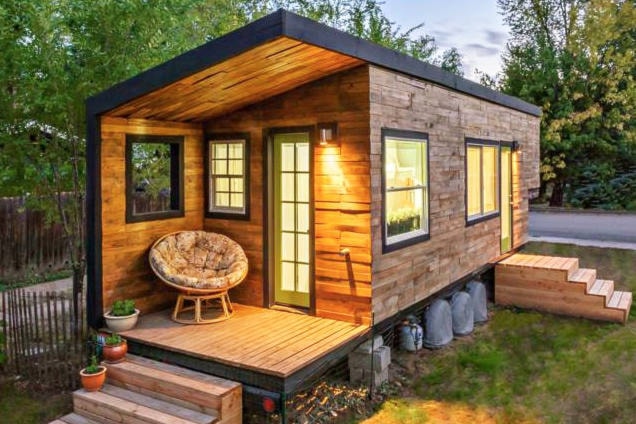With the rising cost of housing, the ‘tiny house’ movement has gained momentum as a potential solution.
Denise Clowater, a member of Affordable Housing Alternatives, presented to Central Saanich council to spread the word.
Clowater said the purpose was to inform the general public about the variety of housing options available.
“We’re trying to find more open-minded options for the 21st century and the reality we’re living in,” said Clowater.
Tiny homes, as defined by the International Code Council, is a maximum of 400 square feet, can exist on a trailer or on a foundation, and are built in a similar method to larger homes. Unlike recreational vehicles or trailers, they are not built from plastics or vinyl.
Affordable Housing Alternatives believes that tiny homes are an affordable way to free up the rental pool since residents are meant to own them.
“I think we need to do some more research, do some more consideration, but there’s a general curiosity about it,” said Councillor Alicia Holman.
While Victoria has made it easier to build garden suites by standardizing the application process and reducing the fee to $200, Holman cautioned that the Official Community Plan of Victoria is different from that of Central Saanich, which necessitates a different solution. In particular, about 60 per cent of Central Saanich is in the Agricultural Land Reserve, and its Official Community Plan encourages development in the villages of Saanichton, Brentwood Bay, and the Keating Business District to limit urban sprawl.
Tiny homes, particularly ones on wheels, are not welcome in many municipalities as they do not meet variety of local bylaws. For example, some designs are not connected to local sewer or power services. Affordable Housing Alternatives is going to each municipality to ask for bylaw updates that consider smaller homes.
Clowater also said that the tiny homes could fit in a rural context, for example, if the residents want to do farm work. This fits into an existing pattern where tiny home residents have agreements with existing property owners and communicate openly.
“We’re all working really hard and being in a larger home sitting by ourselves watching Netflix. We’ve taken away the humanity of togetherness and community.”
Clowater is happy that Affordable Housing Alternatives was invited to be consulted in an upcoming Densification and Infill Study, which Councillor Carl Jensen said council is hoping to get to next year. However, Jensen said by email that timeline “will depend on any other priorities that Council puts in front of [district] staff.”



